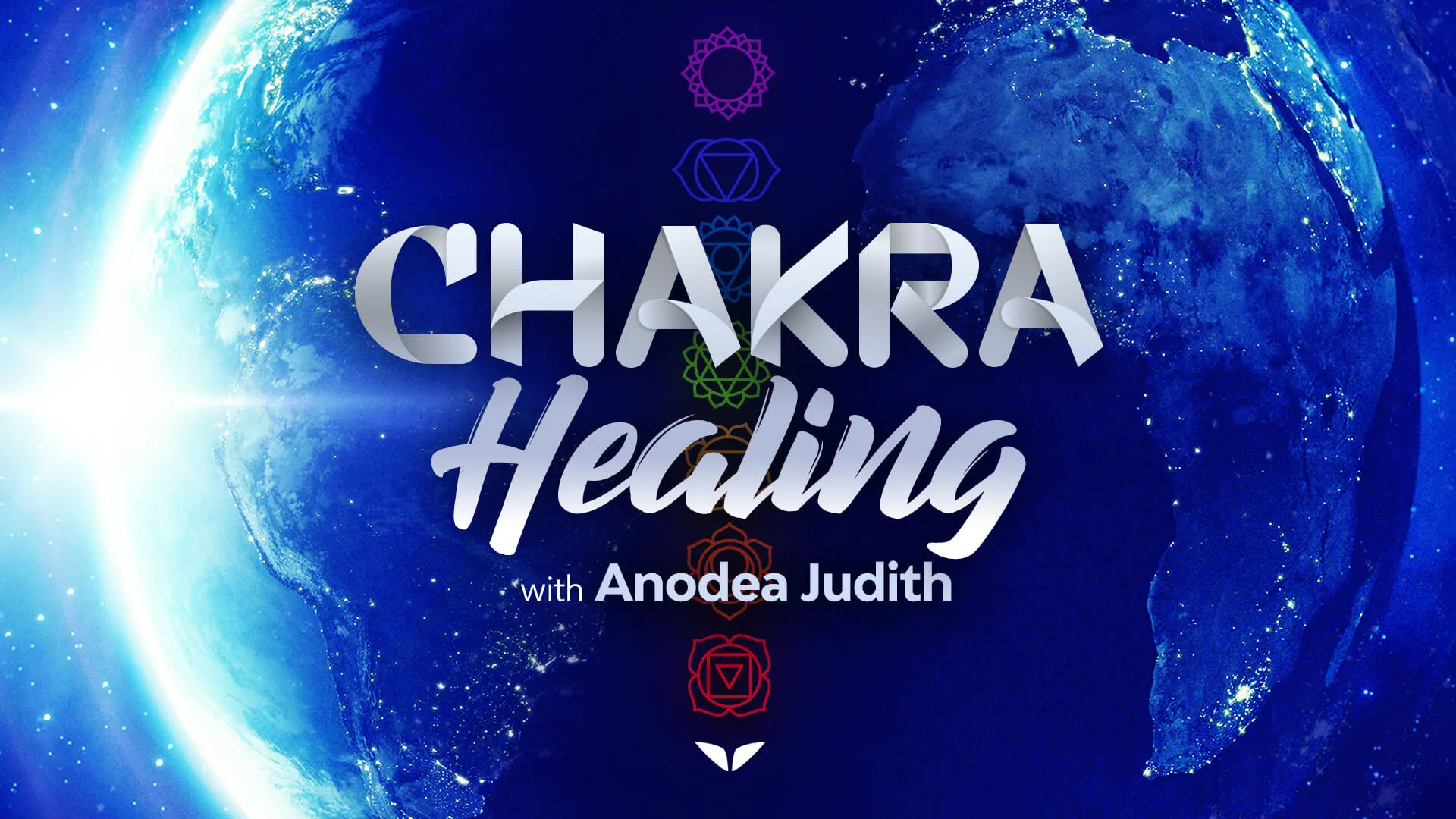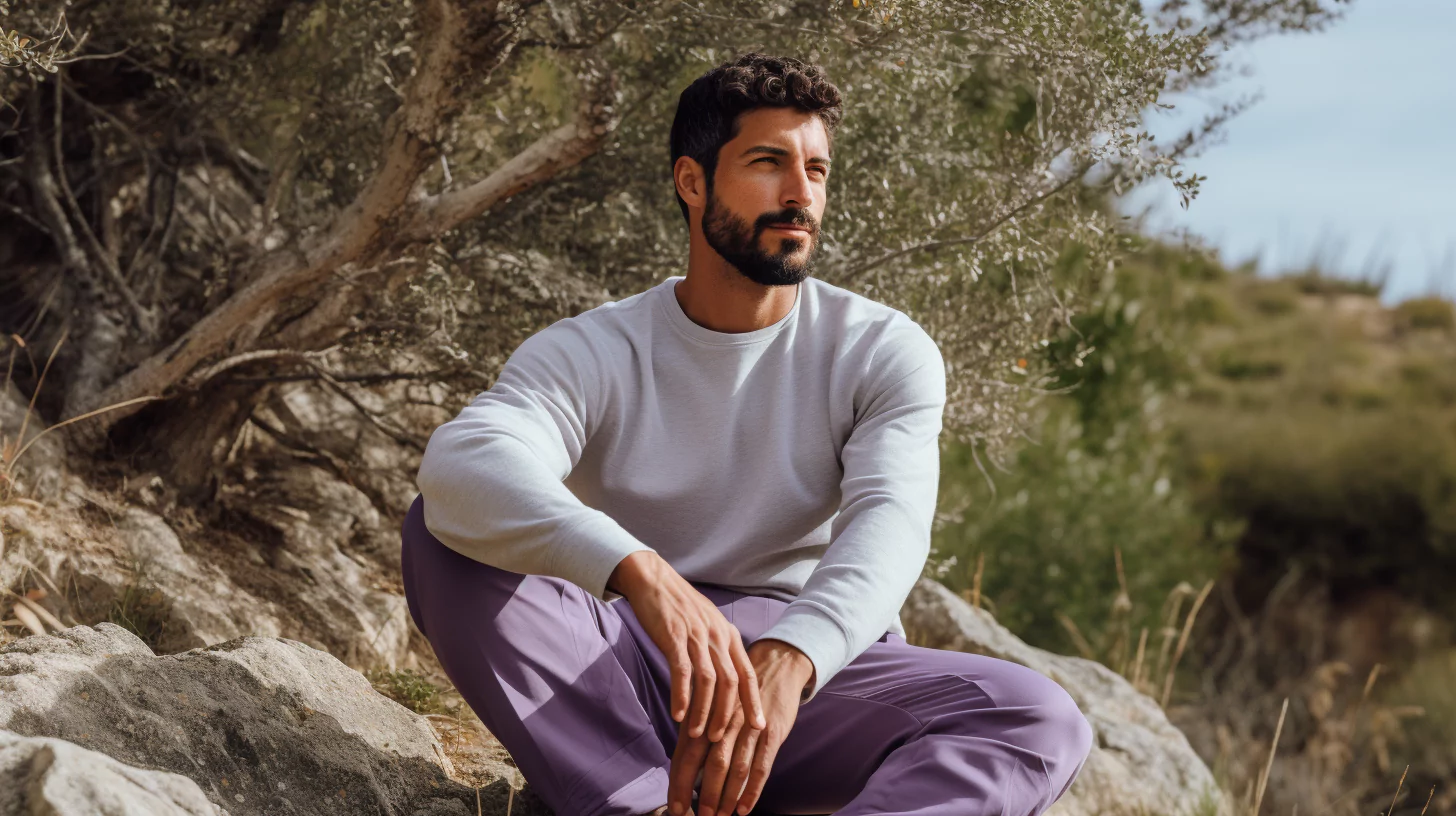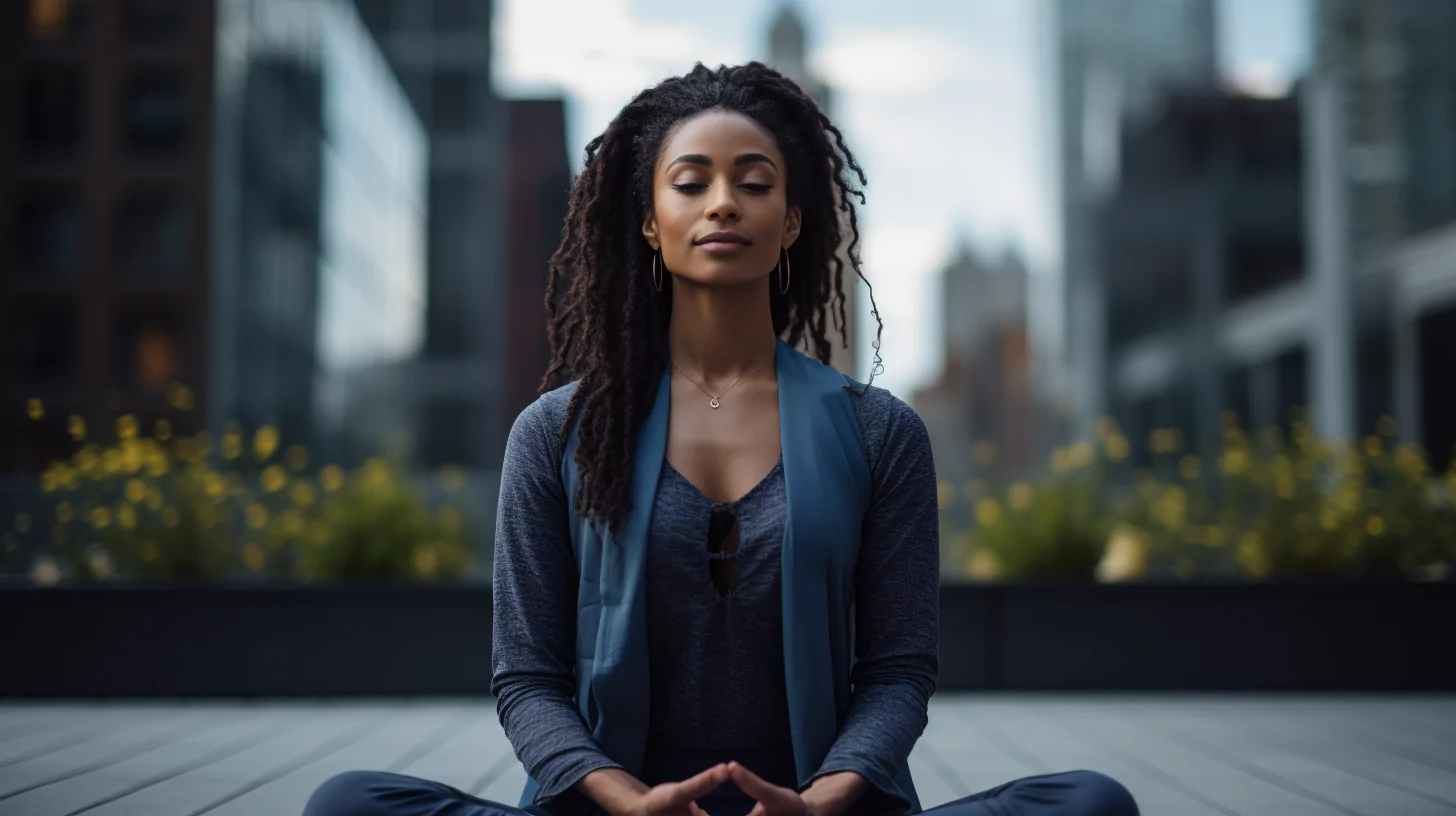The world of chakras is a fascinating one. And understanding how to use them to your advantage can lead you down a great path of abundance.
If you’ve ever wondered what they’re all about, here are the basics of chakras (seven of them to be exact), how to find out if they’re blocked, and, more importantly, how to unblock them.
What Is a Chakra?
A chakra is an energy center. In a perfectly healthy person, the chakras work in unison to create life-force energy. The body, mind, and spirit benefit from balanced chakras. In addition, each chakra has its own symbol, color, and meaning.
The chakra system is a profound philosophical system that represents the levels of consciousness. So it’s the map to the architecture of your soul. — @judithwosi Click To TweetThe term “chakra” is also Sanskrit for “wheel.” This refers to the spinning, spherical energy center that makes up a chakra. That energy is ancestrally known as “prana.”
You may also recognize this word coming up in other practices. This includes yoga and meditation. “Pranayama” means breath control.
Where did the chakra concept come from?
The chakra system originated in India between 1500 and 500 BC. Moreover, the data on each chakra was recorded in one of the most ancient and prized spiritual texts in human history: the Vedas.
How Many Chakras Are There?
There are a total of seven chakras in the human body. They start at the end of your spinal cord and go all the way to the top of your head.
Each chakra is of unique importance and has its own function for the overall well-being of your body. So if any become out of sync, it can negatively impact your physical, mental, and spiritual health.
What Are the 7 Chakras?
Here are the seven chakras and their corresponding numbers in order:
- Root Chakra: Muladhara
- Sacral Chakra: Svadhisthana
- Solar Plexus Chakra: Manipura
- Heart Chakra: Anahata
- Throat Chakra: Vishuddha
- Third Eye Chakra: Ajna
- Crown Chakra: Sahasrara
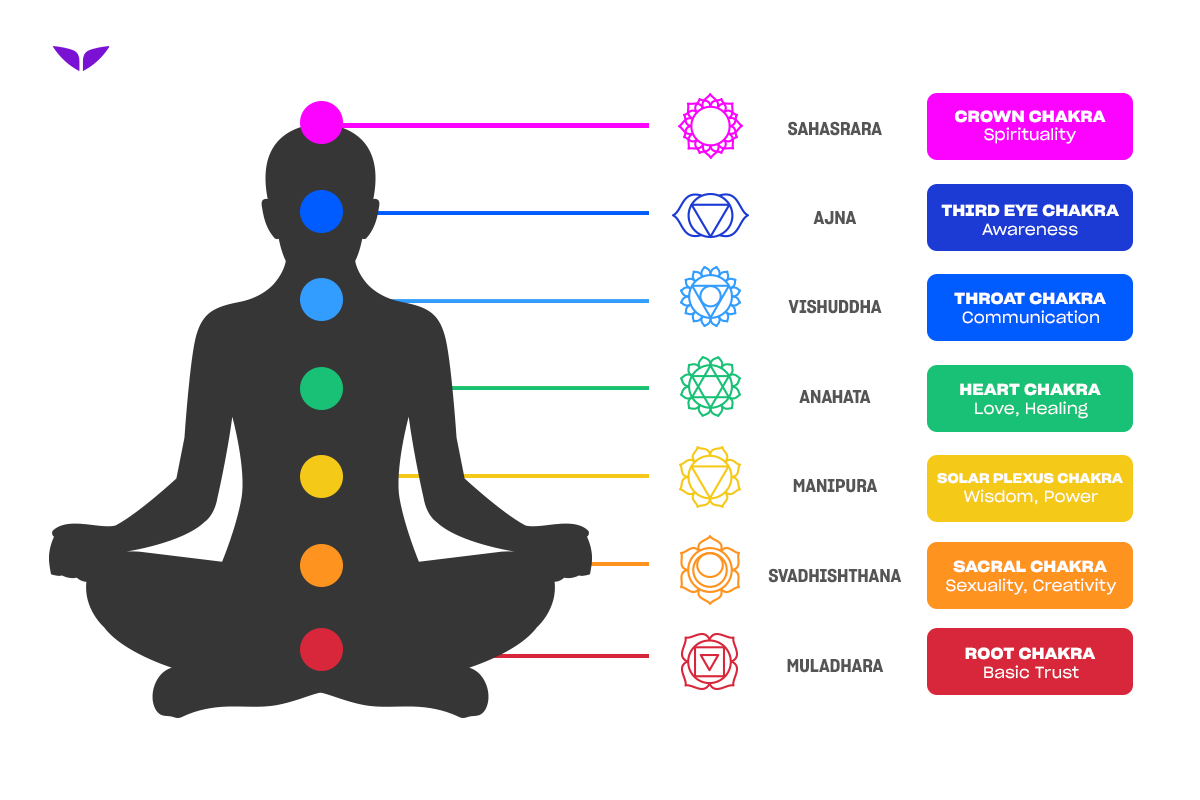
In today’s hectic, stress-inducing world, fully balanced chakras are extremely rare to come by. Therefore, don’t feel disheartened if you suspect something’s not quite right.
Now that you have a general overview of the seven chakras, we’ll dive into more detail regarding each individual chakra, including where the chakras are located in the body.
1. The root chakra
Sanskrit Translation: Muladhara
Color: Red
Location: At the bottom of the tailbone—in the perineum for men and the cervical area for women.
Yoga pose: Mountain Pose, Tree Pose
The official name of this chakra, Muladhara, actually translates as “root” and “support.”
This chakra’s role is to connect all of your physical, bodily energy with the Earth itself. In other words, this chakra “grounds” you.
Your root chakra is also linked to everything you need to survive. This includes the act of breathing, eating, sleeping, and experiencing physical security.
When your first chakra is balanced, you’ll feel a deep sense of peace. You’ll feel safe knowing that all of your core needs are met. Because of this, all total body healing starts here.

2. The sacral chakra
Sanskrit Translation: Svadhisthana
Color: Orange
Location: In your pelvic region, a couple of inches below the belly button.
Yoga pose: Revolved Triangle Pose, Goddess Pose
Also known as “the place of the self,” the sacral chakra is, therefore, all about your creative identity as a human.
This chakra helps you enjoy your life here on Earth. It’s the energy that motivates you to enjoy the fruits of your labor. Above all, indulge in pleasurable activities like sex, artistic activities, and good food.
When your second chakra is balanced, you’ll truly relish all the finer things in life. Because of this, you’ll enjoy them without overdoing them.
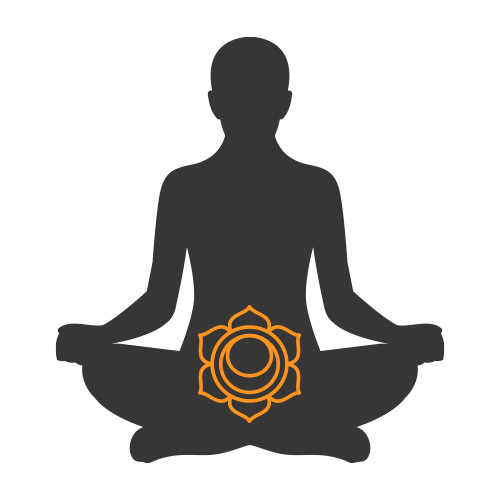
3. The solar plexus chakra
Sanskrit Translation: Manipura
Color: Yellow
Location: In your stomach—around two to three inches above the belly button. The Manipura energy center further translates as “the lustrous gem.” This is because this is the chakra where your self-confidence and personal power sit together in harmony.
Yoga pose: Boat Pose, Downward-Facing Dog
Many call the solar plexus chakra the “warrior chakra” as well. This is because this is by far the most powerful supporting chakra for bravery and boundary-setting.
For instance, you can most probably physically feel its raging energy when you feel angry. You’ll feel it when you need to defend yourself. For better or for worse, it’s your fight and flight response’s right-hand man!
When balanced, high self-esteem and self-worth are bonus by-products.
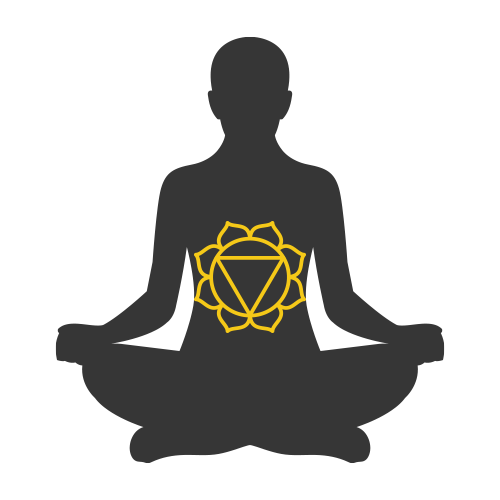
4. The heart chakra
Sanskrit Translation: Anahata
Color: Green
Location: In the chest, in and around the heart space.
Yoga pose: Low Lunge, Camel Pose
Interestingly, the Sanskrit term for the heart chakra translates to the state of being “unhurt.”
Because of this, when you’re experiencing feelings of love, compassion, and kindness…it’s this energy center you’re connecting to.
In spite of all its translations, this chakra is fundamentally just about love. Love is the most healing frequency of all. Similarly, when your heart chakra is balanced, you are easily able to feel love and empathy for yourself and others.

5. The throat chakra
Sanskrit Translation: Vishuddha
Color: Sky Blue
Location: Right in the middle of your throat.
Yoga pose: Easy Pose (with chanting), Supported Shoulderstand
Carrying the meaning of the words “very pure,” this chakra helps you to quite literally speak up. Because of this, you’ll do so in a smooth, confident, authentic way.
In addition, this chakra is your official seat of self-expression. The throat chakra also gives a voice to your personal preferences, beliefs, and values.
When balanced, you openly and lovingly speak the truth. Moreover, you express yourself in whichever way feels most in alignment at any given time.
In other words, there’s nothing that enlightens and inspires those around you like an open throat chakra.
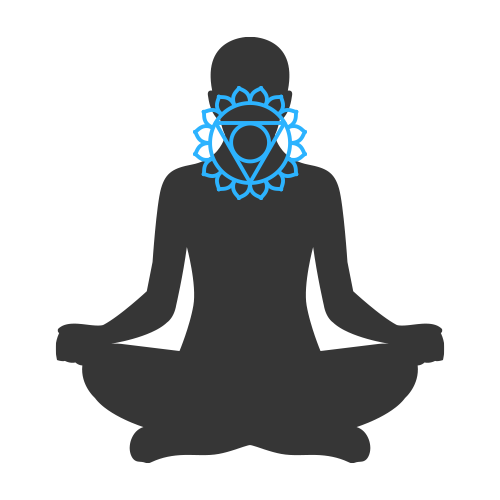
6. The third eye chakra
Sanskrit Translation: Ajna
Color: Indigo
Location: Between the eyebrows—extending to your brain’s pineal gland.
Yoga pose: Dolphin Pose, Lotus Pose
The infamous third eye chakra, Ajna, roughly translates as “beyond wisdom.”
This is because this mystic energy center opens you up to expanded states of consciousness. They go way beyond the five senses and the material world we live in.
Extrasensory perception, intuition, and psychic abilities are all born from the third eye. This is because of the brain’s small yet extremely powerful pinecone-shaped gland. It sits just behind Ajna, and goes by the name of the “pineal gland.”
Furthermore, long before brain imaging, many ancient cultures knew about the third eye’s presence. They believed it to be our human connection to the divine.
When your third eye is balanced, you’ll feel in tune with the physical and spiritual world. You’ll also be able to connect with both your ego and your soul.
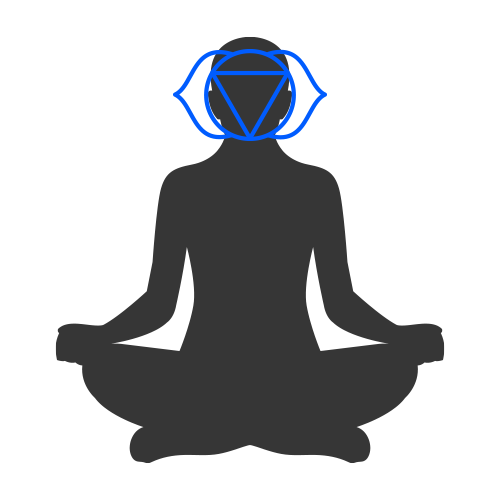
7. The crown chakra
Sanskrit Translation: Sahasrara
Color: Violet or White
Location: At the very top of your head, resting on your crown
Yoga pose: Corpse Pose, Lotus Pose
According to most tantric yoga traditions, the final chakra translates as “a thousand petals.” This refers to its beautiful, petal-laden symbology.
Sahasrara is nothing but pure consciousness, connecting you to the Universe. This complete Universe is also known as “Om.” And it’s quite literally nothing personal…
When it comes to the concept of the crown chakra, it’s something we all have in common. Every human, animal, plant, ecosystem, planet, and star has that same life force energy.
It’s also worth noting that this chakra exists beyond your unique ego. It is your connection to “God,” whatever you deem that to be.
Achieving a balanced crown chakra is the goal of any spiritual practice. Moreover, it’s not easy to do. Once truly balanced, you’ve achieved enlightenment.
In other words, you discover the secret of who you really are. Transcending suffering is known in the Buddhist tradition as “Nirvana.”
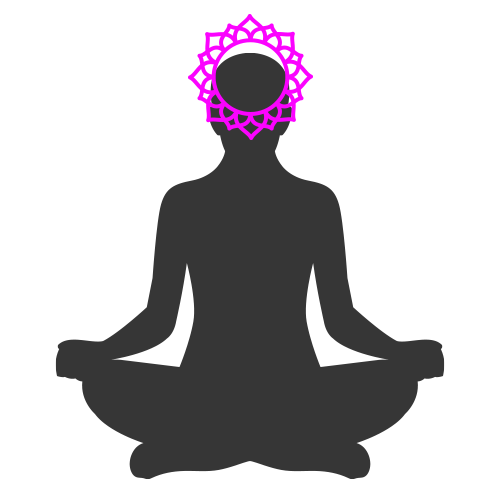
Why Chakras Get Blocked
Chakras can get clogged and cause numerous problems in our everyday lives.
Imagine a beautiful, flowing stream in a mountainous forest. Undisturbed, the water will flow from the very top of the mountain to the very bottom. It will eventually lead to the sea.
This is water’s natural course, right? But imagine now that, due to an extreme storm, the biggest, heaviest boulder you’ve ever seen rolls into the stream. It’s now blocking the flow.
Because of this, the current stops, unable to access any land below the boulder.
This is a perfect analogy for how the chakras work because the flowing water mirrors the flow of energy through the energy centers.
The giant rocks of life that can block our chakras are:
- Work stress
- Financial turmoil
- Poor diet
- Sexual oppression
- Low self-esteem
- Suppressed anger
- Illness
- Grief
- Heartbreak
- Rejection
- Resentment
- Fear
- Anxiety
- Stubbornness and tunnel vision
- Denial
It is, of course, a chicken-and-egg scenario. Whether the work stress comes first or whether the root chakra blockage comes first…it’s all a mystery.
Our chakra expert, Anodea Judith, adds that these blocks are like knots that occur as a result of resistance, aka, our “nots.” She explains, “These knots are your ‘nots’, where you can not, do not, or have not…and you want to turn all those not’s into a ‘yes!’ for you in your life.”
Why Multiple Chakras Block Together
What remains clear is that once one chakra is out of alignment, it tends to have a knock-on effect on the surrounding chakras. Even though the chakras can get clogged individually, they can also get clogged in clusters.
For example, let’s say that your partner has seriously crossed a boundary. They’ve crushed your self-esteem with something they said. That clogs up your solar plexus chakra. In addition, you’re most likely going to feel betrayed, less appreciated, and perhaps less loving towards them too. This is a classic example of a heart chakra blockage.
That’s two blocks for the price of one!
So as you can see, although the chakras are powerful beyond measure, they’re also pretty sensitive to all of your human experiences.
Thankfully, just as the chakras can be blocked and closed, so too can they be cleared and opened.

Transform Your Energy Points With Tips On How to Unblock Chakras
There are a variety of ways you can unblock and open your chakras, and it can be quite easy to do. Here are a few ways that come highly recommended:
- Chakra meditations
- Chakra crystals
- Essential oils
- Using affirmations
- Making slight behavioral changes
Keep in mind that perfectly healthy, flowing chakra energy is pretty hard to come by, so don’t feel disheartened if you suspect an imbalance.
And once you identify which energy center the blockage is located in, here are a few ways you can unblock it.
1. How to unblock the root chakra
Common symptoms of blockage: feeling generally ungrounded and unsafe. In fear, anxiety, lack, and the “I don’t have enough“-ness mindset. Potential digestive upset.
Meditation: Sit in a quiet space where you won’t be disturbed, and imagine a glowing red ball of energy in the perineum or cervical area. Then, imagine the energy spinning smoothly in a clockwise motion. Start repeating the affirmation below silently to yourself. Practice this for 10 minutes. You may choose to hold the corresponding chakra stone as you do so.
Healing affirmation: “I am safe and grounded.”
Stones: Hematite, Black Onyx, and Smoky Quartz
Essential oils: Vetiver, spikenard
Behavioral changes: Self-soothing, taking time to engage in psychical body experiences like eating hearty meals. Getting enough sleep and walking in nature, for example.
2. How to unblock the sacral chakra
Common symptoms of blockage: Feeling “zapped” with little to no creativity or sex drive. Potential urinary, sexual, or hormonal disturbances.
Meditation: Sit in a quiet space where you won’t be disturbed and imagine a glowing orange ball of energy in the pelvic region. Then, imagine the energy spinning smoothly in a clockwise motion. Start repeating the affirmation below silently to yourself. Practice this for 10 minutes. You may choose to hold the corresponding chakra stone as you do so.
Healing affirmation: “I enjoy the pleasures of life.”
Stones: Orange Calcite and Citrine
Essential oils: Ylang-ylang, rose, tangerine
Behavioral changes: Engaging in creative activities such as drawing, painting, playing an instrument, tantric sex, and mindful eating, for example.
3. How to unblock the solar plexus chakra
Common symptoms of blockage: Feeling frustrated, weak-willed, and insecure. Lacking self-esteem, confidence, and personal power. Because of this, potential stomach tightness and nausea may occur.
Meditation: Sit in a quiet space where you won’t be disturbed and imagine a glowing yellow ball of energy in the stomach. Then, imagine the energy spinning smoothly in a clockwise motion. Start repeating the affirmation below silently to yourself. Practice this for 10 minutes. You may choose to hold the corresponding chakra stone as you do so.
Healing affirmation: “I am strong and I know my worth.”
Stones: Tiger’s Eye and Sunstone
Essential oils: Atlas cedarwood, lemongrass, helichrysum
Behavioral changes: Setting boundaries, practicing saying “No,” enhancing self-esteem, exercising, and doing things you’re good at, for example.
4. How to unblock the heart chakra
Common symptoms of blockage: Hurt, grief, heartbreak, loneliness, disconnection, and lack of compassion. Potential chest pain, heartburn, heaviness, and stooped posture.
Meditation: Sit in a quiet space where you won’t be disturbed and imagine a glowing green ball of energy in the heart space. Then, imagine the energy spinning smoothly in a clockwise motion. Start repeating the affirmation below silently to yourself. Practice this for 10 minutes. You may choose to hold the corresponding chakra stone as you do so.
Healing affirmation: “I am loved and I am loving.”
Stones: Rose Quartz and Aventurine
Essential oils: Rose
Behavioral changes: Practicing self-compassion, gratitude, and random acts of kindness. Engaging in activities such as cuddling, intimacy, gift-giving, and expressing love, for example.
5. How to unblock the throat chakra
Common symptoms of blockage: Telling lies, little to no self-expression, and fear of speaking up. Potential sore throat and stiffness in the neck.
Meditation: Sit in a quiet space where you won’t be disturbed and imagine a glowing sky-blue ball of energy in the neck or throat. Then, imagine the energy spinning smoothly in a clockwise motion. Start repeating the affirmation below silently to yourself. Practice this for 10 minutes. You may choose to hold the corresponding chakra stone as you do so.
Healing affirmation: “I speak my truth and express myself openly.”
Stones: Aquamarine and Sodalite
Essential oils: Blue chamomile, frankincense
Behavioral changes: Telling the truth, finding ways to uniquely express yourself, and speaking your needs aloud, for example.
6. How to unblock the third eye chakra
Common symptoms of blockage: Stubbornness, narrow-mindedness, and denial of the spiritual world. Lack of inner intuitive guidance. Potential headaches.
Meditation: Sit in a quiet space where you won’t be disturbed and imagine a glowing indigo ball of energy between the eyebrows or pineal gland. Then, imagine the energy spinning smoothly in a clockwise motion. Start repeating the affirmation below silently to yourself. Practice this for 10 minutes. You may choose to hold the corresponding chakra stone as you do so.
Healing affirmation: “I know who I am and I trust my intuition.”
Stones: Amethyst, Fluorite, and Lolite
Essential oils: Lemon, sandalwood
Behavioral changes: Frequent meditation, mindfulness, and listening to one’s “inner voice,” for example. Moreover, a new openness to spirituality may occur.
7. How to unblock the crown chakra
Common symptoms of blockage: Suffering “the human condition.” No connection to spirituality or “God” in whatever way one defines the concept.
Meditation: Sit in a quiet space where you won’t be disturbed and imagine a glowing white or violet ball of energy on the crown of the head. Then, imagine the energy spinning smoothly in a clockwise motion. Start repeating the affirmation below silently to yourself. Practice this for 10 minutes. You may choose to hold the corresponding chakra stone as you do so.
Healing affirmation: “I am the Divine connected to all life in the Universe.”
Stones: Clear Quartz, Amethyst, and Moonstone
Essential oils: White lotus
Behavioral changes: An increased commitment to balancing all of the chakras. Frequent meditation, mindfulness, and an awareness of the oneness of all life. In addition, one may feel drawn to star-gazing, traveling, and lucid dreaming.
How to Activate Chakras In the Human Body
To balance your chakras in a quick and easy way, you should start with a simple chakra meditation.
Chakra activation involves focusing on each chakra individually and breathing into them with your full concentration. To enhance the experience, many people like to use affirmations and chakra stones.
An example of a chakra meditation
Start by focusing on each chakra individually for a couple of minutes or so.
While you do this, pay full attention to the chakra’s location and the energy you wish to infuse it with.
Also, feel free to imagine a glowing, colored light spinning clockwise for every chakra. Remember to start with the root chakra and end with the crown chakra.
For each chakra, use the affirmation. Say it with belief, concentration, and passion. The way you meditate will make all the difference.
So, go all in, even if it feels like your comfort zone is being pushed to its limits.
Why use chakra stones?
Chakra stones are optional when you meditate. But they may aid your concentration and make the process smoother energetically too.
When you change the chakra you’re meditating on, don’t forget to gently place your current chakra stone down and swap it for the new one.
Power Up Your Chakras
This guide serves to better understand the seven chakras. But there’s a lot more to learn when it comes to striking the right balance for your unique physical, emotional, and spiritual body.
If you want to take your newfound knowledge to the next level, head over to Mindvalley and watch a free class of the Chakra Healing program with chakra system expert Anodea Judith.
—
Images generated on Midjourney.


